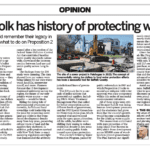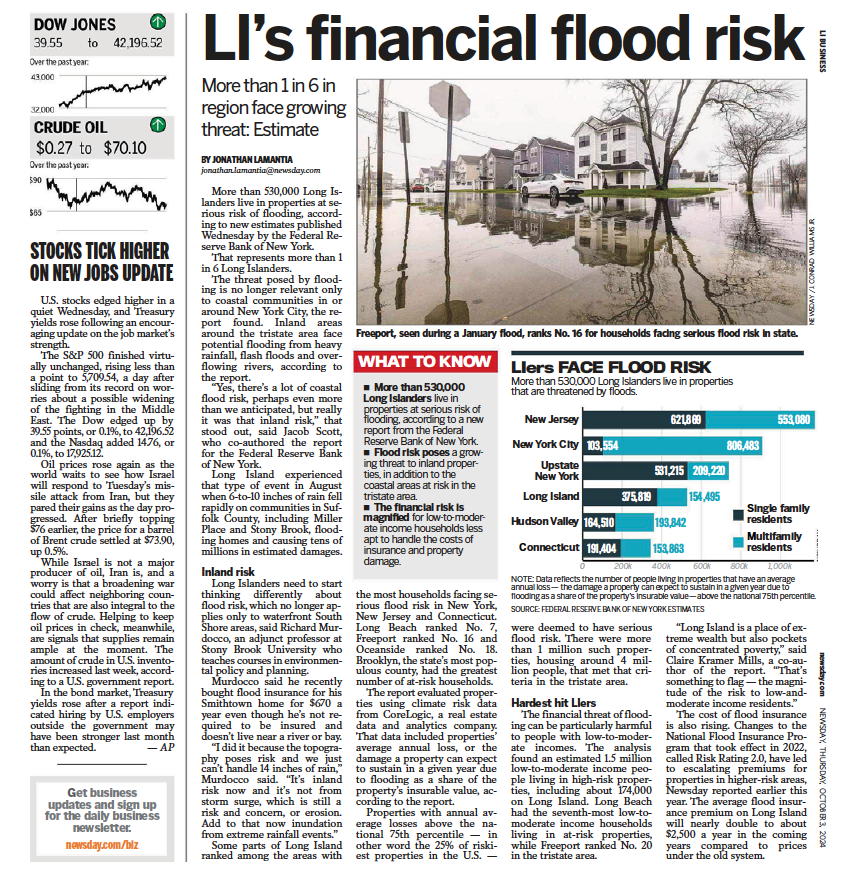Well, after months of being blitzed by ads, fliers, neon wristbands, signs and even promises of free ice cream (really?…just…no, c’mon. Even Bob’s Discount Furniture mocks offering free food as an incentive), the voters in the Town of Oyster Bay have spoken. The voters have allowed the Town to surplus 54 acres of land adjacent to the Cerro Wire property by a vote of 17,327 in favor to 8,824 not in favor. Now, being Long Island, this “Saga in Syosset” in far from over, but there are important lessons to be learned.
In case you haven’t noticed, I write about Long Island’s land use and urban planning. That being said, I value the planning process, or the process that policymakers and nonprofit advocates should use when making land use decisions. There are two different types of urban planning efforts seen on Long Island. First is Community-based Planning, which is the process the Saga in Syosset should have used. Second is the Environmental planning process, which requires scientific study and data-based recommendations, and the methodology varies. An example of environmental planning is the methodology used to craft the 1978 208 Study, which outlined how best we should protect our groundwater. The Community-based planning process is below:
The planning process (sourced from the Carmans River Plan and Dr. Lee Koppelman)
The process is driven by public input and participation. Once existing inventory is taken, the public should be brought in for identification of needs, resources and problems in their community.
Developers on Long Island take note: if the public isn’t involved in the planning process, enjoy the 20 years plus of project purgatory that you’ll be living in. This is the reality in the region. For better or worse, resident do not take any change lightly and can stall a project for years. Sometimes, the opposition is legitimate, others times, not so much.
Just ask Taubman and Long Island Jobs Now, whose mall just was dealt a huge blow by voters in the Town of Oyster Bay. On Long Island, one cannot come mosey on in, say “We’re building X (insert project here, be it Avalon Bay, Taubman’s Mall, or the famed Willy World from the late 80’s in Yaphank) and you’re going to like it!” That’s not how things should, and don’t work in Nassau and Suffolk Counties. The plan handed down from the mountain approach especially doesn’t work out east because you’ll have Dick Amper to contend with. Good luck with that.
Long story short- if you own a piece of increasingly rare vacant land on Long Island and plan on developing it, you better be sure that the public in the surrounding communities is brought into the process as early as possible.
Sadly on Long Island, the process is not always so transparent. All too often, developers seek from local government density bonuses without consummate public benefits, shady land dealings and so on. Politics, while unfortunately a necessary part of the process, often leads to bad land use policy that the taxpayers pay for decades. Bad land use policies become everybody’s burden.
Taubman would’ve been wise to familiarize themselves with the area, and work with local civics and government officials to assess the needs of the community. Every developer should be able to do their homework and assess what the community has too much of, and too little of. This is government’s responsibility- a strong department of planning that is giving the autonomy to do their job can provide useful and valuable information for decades.
Further, it is the responsibility of government to provide an even playing field for all developers- large and small. All too often, one developer follows one set of rules, and another gets a free pass from density and zoning requirements. This is unfair, costly and mars the process. The candle burns at both ends- if we want strong policies that work, everyone must do their part.
Not in my backyard! It will create jobs! Think about the taxpayers! Too much density! Brain drain!
The solution to all of these woes? A standardized set of rules, a strong partnership between the private sector and government, and sound planning.











